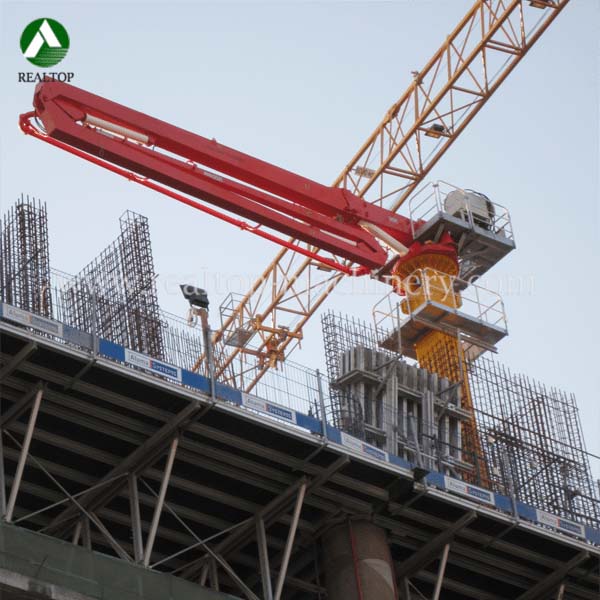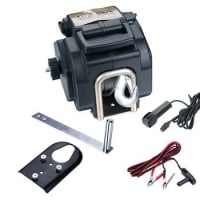The use of static concrete pumps with stationary placing booms has increased in popularity in the UK recently, especially for building reinforced concrete frame buildings on inner city sites where space is at a premium. Previously Camfaud would carry out these contracts using concrete placing boom pumps with additional pipeline where necessary. Now however, as a result of demand from customers, we offer static pumps and stationary placing booms complete with a full installation and maintenance service. For rc frames and large concrete structures this option should certainly be considered.
With this system, the concrete is pumped by a diesel or electrically powered, static concrete pump, through a fixed 125 mm pipeline, to the stationary placing boom. The boom is mounted on a steel column of up to 20 metres high. The column is supported by a cross base or a system of floor frames set into the concrete floors. If floor frames are used, the whole placing boom assembly can climb with the building as the work progresses. This system is considerably faster than using a crane and skip and is less likely to be adversely affected by high winds.
On larger sites, one boom can be used in conjunction with two or more columns allowing concrete to be placed over a bigger area. The boom can be readily moved from one column to the next and splits into two sections to facilitate handling by tower crane. The ability to move the boom from column to column allows an efficient cycle of work to develop of preparation, pouring and stripping shutters.
The use of stationary placing booms can obviate the need for pipeline laid out across the slab. This generally will increase the speed of each pour, reduce labour requirement and improve site safety. An addition advantage of this system is that the placing booms can easily pour walls and columns thus freeing up valuable crane time.

With this system, the concrete is pumped by a diesel or electrically powered, static concrete pump, through a fixed 125 mm pipeline, to the stationary placing boom. The boom is mounted on a steel column of up to 20 metres high. The column is supported by a cross base or a system of floor frames set into the concrete floors. If floor frames are used, the whole placing boom assembly can climb with the building as the work progresses. This system is considerably faster than using a crane and skip and is less likely to be adversely affected by high winds.
On larger sites, one boom can be used in conjunction with two or more columns allowing concrete to be placed over a bigger area. The boom can be readily moved from one column to the next and splits into two sections to facilitate handling by tower crane. The ability to move the boom from column to column allows an efficient cycle of work to develop of preparation, pouring and stripping shutters.
The use of stationary placing booms can obviate the need for pipeline laid out across the slab. This generally will increase the speed of each pour, reduce labour requirement and improve site safety. An addition advantage of this system is that the placing booms can easily pour walls and columns thus freeing up valuable crane time.




















※コメント投稿者のブログIDはブログ作成者のみに通知されます